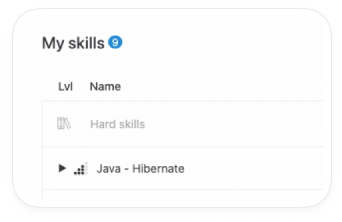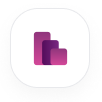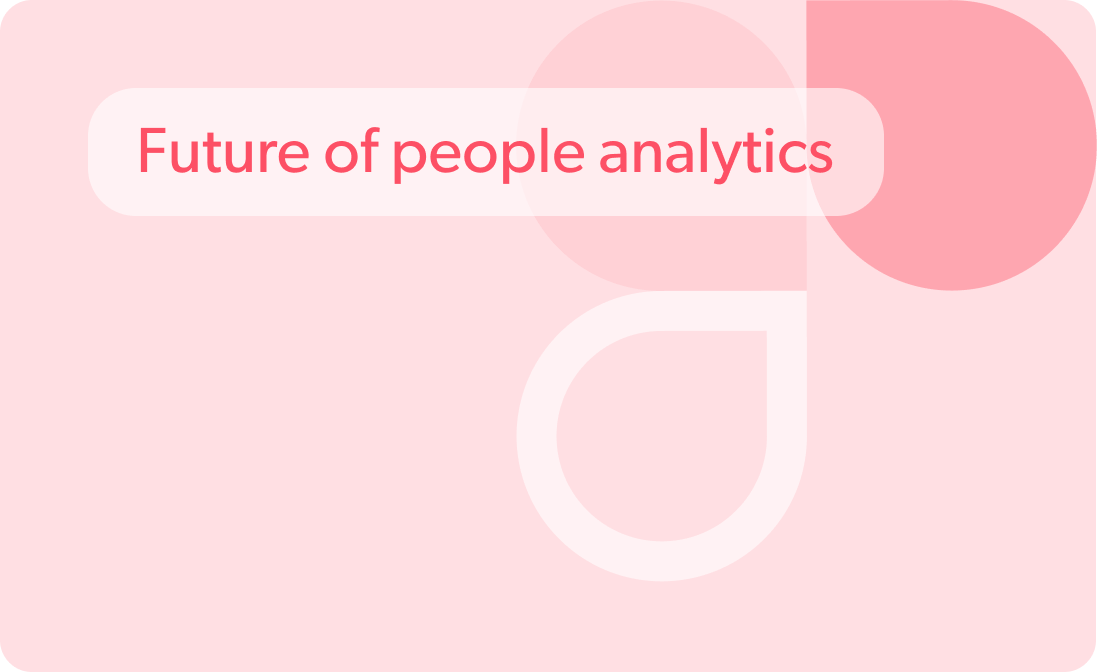6 ways people analytics can help HR improve retention
Table of contents
In today’s dynamic business landscape, organizations increasingly recognize employee retention‘s critical importance as a cornerstone of sustained success. High employee turnover disrupts workflow, hampers productivity, and incurs significant financial costs associated with recruitment, training, and lost institutional knowledge.
- Throughout 2022, the trend initiated in early 2021 persisted as more than 50 million American workers chose to resign from their positions.
- In 2022, a quarter of users surveyed on Joblist decided to leave their jobs, with an additional 35% opting to do so without securing alternative employment. Among the respondents who departed from their jobs, 22% expressed regret regarding their choice. Within this group, 49% mentioned finding a new job proved more challenging than anticipated. In comparison, 13% cited post-resignation economic downturn as the reason for their remorse.
- Every month in the United States, the Job Openings and Labor Turnover Survey (JOLTS) reports that 3 to 4.5 million employees voluntarily resign. Another survey highlighted that 94% of participants would choose to remain with their current employers if long-term learning opportunities were provided.
Think about it, when an employee departs from a company, a significant amount of time is consumed in managing their departure. Replacing entry-level employees usually entails an expense equivalent to 50% of their salary.
Promoting employee retention is most effectively achieved by fostering a sense of value and providing opportunities for growth within your organization. When employees’ sense of value diminishes, 76% actively seek alternative job prospects. Companies are increasingly embracing the potency of employee retention analytics to cultivate a committed and motivated workforce. This progressive strategy, grounded in data-driven insights, reshapes how businesses comprehend, tackle, and enhance employee retention rates. In this article, we’ll explore:
- The compelling intersection of employee retention and people analytics
- The key techniques and methodologies that underpin this innovative practice, examining how it provides actionable insights for companies striving to build a resilient and engaged workforce
- The revolutionary possibilities of employee retention analytics lie in its ability to propel organizational triumph while cultivating a vibrant workplace atmosphere that nurtures a sense of value, empowerment, and enduring employee motivation.
Key findings about people analytics and employee retention
People analytics involves using data and statistical methods to make evidence-based decisions about an organization’s workforce. Thus, if we are talking about employee retention, people analytics can:
- Help organizations identify the most effective channels for sourcing candidates, assess candidate fit, and predict employee retention. Companies can make more informed decisions about their recruitment strategies by analyzing past hiring data.
- Measure and track employee performance, identify top performers, and understand factors contributing to productivity. By identifying patterns in performance data, companies can optimize talent development and create targeted training programs.
- Predict which employees are at risk of leaving and implement strategies to improve retention by analyzing factors contributing to employee turnover, such as compensation, job satisfaction, and leadership.
- Help organizations track diversity metrics, such as gender and ethnicity representation, and identify potential biases in the hiring and promotion processes.
- Aid in identifying potential candidates for future leadership roles within the organization with the help of succession planning. It ensures a smooth transition of talent to critical positions.
- Reveal patterns of stress and burnout among employees. This information can help organizations implement initiatives to support employee well-being and work-life balance.
- Identify areas where employees may need additional training and development opportunities to enhance their skills and performance by analyzing skill gaps and performance data in organizations. Companies can forecast future workforce trends, such as skill requirements, workforce demand, and potential attrition rates.
Get more practical ways for employee retention through people analytics
Discover the strategies, best practices, and goals that drive successful employee retention using people analytics. From securing management buy-in to fostering an analytical culture, this guide equips you with actionable insights for retaining top talent.
How people analytics can boost employee retention
In the dynamic landscape of modern workplaces, where competition for top talent is fierce, and employee turnover can significantly impact an organization’s success, the integration of people analytics emerges as a pivotal solution. This innovative approach transcends the conventional employee retention methods by harnessing the vast sea of data generated within an organization.
“By identifying patterns in employee data, we can pinpoint factors that contribute to turnover and make informed decisions to create a more engaging and fulfilling work environment.”— Rachel Fletcher, Chief people officer at Stellar Elements Rachel Fletcher, Chief people officer at Stellar Elements.
Instead of relying on intuition alone, businesses are leveraging data-driven insights to understand, predict, and mitigate factors contributing to turnover. It offers a concrete understanding of employee behaviors and needs and precisely empowers companies to tailor retention strategies. Here are some ways business and HR leaders can use people analytics to enhance employee retention:
Identifying turnover patterns
People analytics can help identify patterns and trends related to employee turnover. By analyzing historical data, HR professionals can pinpoint factors contributing to high employee turnover in specific roles, departments, or at particular times of the year.
For example:
Continental, a prominent leader in automotive manufacturing, was looking for solutions to reduce attrition rates within the company’s Mexican workforce. Through a strategic partnership with HRForecast, a pioneering analytics solution provider, the initiative aimed to decipher the intricate dynamics of employee turnover, identify key patterns, and devise customized measures to curb attrition effectively.
Leveraging cutting-edge machine-learning algorithms, the HRForecast team constructed an attrition model to extract drivers of attrition from the wealth of unstructured exit interview data. The application of analytics algorithms further illuminated the dataset, yielding localized insights tailored to specific geographical locations.
With the analytics-derived results, Continental could enact location-specific measures adeptly tailored to the distinct attrition clusters identified. This informed approach led to the following:
- Create action plans and follow-up activities
- Fortify the organization’s efforts to retain valuable employees
- Facilitate a deeper comprehension of the diverse employee types within the company
- Empower Continental to foster a more stable and engaged workforce.
Predictive modeling
Business leaders can use advanced analytics to create predictive models anticipating which employees are more likely to leave. Organizations can intervene and take action to retain valuable employees by identifying potential flight risks early on.
For example:
Stadtwerke Düsseldorf, a municipal utility company, successfully harnessed the power of predictive modeling and data analysis to achieve its strategic goals. Through collaboration with HRForecast, the company achieved significant cost savings, optimized spatial planning, and gained insights into future workforce risks. By leveraging data-driven approaches, the company could make informed decisions and plan for the future more effectively. The projects encompassed a range of challenges, from spatial planning for a new head office to strategic workforce planning and predicting future labor force availability. Each project exemplified the synergy between data analysis, simulations, and predictive modeling in addressing complex organizational needs.
Exit interview analysis
Business leaders can use people analytics to analyze exit interview data to identify common themes or issues that lead to employee departures. Understanding the underlying reasons for turnover can inform retention strategies.
For example:
HanseWerk, a prominent player in the field, recognized the imperative to align its HR strategy with these changes. In collaboration with HRForecast, HanseWerk undertook a comprehensive project:
- Defining target groups. Collaboratively identifying the analysis’s focus by considering industry peers and key market players.
- Data-driven evaluation. HRForecast utilized advanced data analytics, encompassing web crawling and AI algorithms. This process encompassed scanning career websites and job portals, capturing job openings from relevant competitors. AI algorithms identified emerging trends, forecasting the energy industry’s skills and job demands.
- Actionable insights & recommendations. The analysis yielded actionable insights, showcasing strategic opportunities to optimize recruiting and talent development endeavors.
HanseWerk’s commitment to embracing the challenges of the energy industry’s technological evolution through data-driven insights underscores its dedication to staying ahead in a rapidly changing landscape.
Performance analytics
Evaluating performance data about turnover can reveal insights into the impact of employee performance on retention. Employees who are not meeting performance expectations may be more likely to leave.
For example:
Facing talent shortages exacerbated by the 2008 financial crisis and subsequent growth, EY joined forces with HRForecast to reimagine talent management. The project entailed data-driven phases.
Attrition patterns were scrutinized to unearth the reasons behind employee turnover. Advanced statistical analyses delved into workload, gender, and education, focusing on diversity considerations. A thorough labor market study identified gaps in “middle management,” prompting a search for suitable external candidates.
HRForecast implemented tailored analytics tools integrated, streamlining EY’s recruitment processes and ensuring they remained optimized for the present and future.
Strategic skill management
This approach recognizes that nurturing and harnessing employees’ skills isn’t just about productivity; it’s critical to keeping them engaged, motivated, and committed to the organization. Strategic skill management involves identifying, developing, and aligning employees’ skills with the organization’s goals.
For example:
Merck Group, a multinational science and technology company, encountered the imperative to transform its aspirations into tangible strategic workforce capabilities. Facing the challenge of aligning its vision with actionable insights, the company engaged in a strategic skill management approach that reshaped its people dimension and fortified its standing in the industry. To surmount the hurdles of uncharted territories, the company partnered with HRForecast, deploying a market intelligence analysis strategy that revolutionized its strategic workforce planning.
Through its strategic skill management journey, Merck Group embraced a data-driven ethos, illuminating pathways to future excellence. The collaboration with HRForecast delivered insights and tangible value, arming Merck with the understanding to steer its people dimension with precision and finesse.
Trend analysis
Rather than relying solely on reactive measures, organizations are utilizing data-driven insights to identify patterns and potential retention issues proactively. Trend analysis systematically examines various workforce metrics, such as turnover rates, employee feedback, and performance indicators, over a specified period.
For example:
Deutsche Telekom, a telecommunications company, tried to employ trend analysis to enhance employee retention strategies. The company used data-driven analysis to:
- Translate trends into skills. The analysis facilitated translating emerging trends into tangible skill requirements.
- Identifying skill potentials. Uncovering technology gaps and new skill potentials enhanced strategic planning.
- smartPeople dashboard. Telekom gained insights into competitor strategies, including market behavior and new players from the IT industry.
- smartPlan dashboard. Telekom installed a data-driven platform quantifying market evolutions and serving as an early-detection trend radar.
Personalized learning
In the ever-evolving landscape of employee retention strategies, personalized learning has emerged as a dynamic approach to nurturing a loyal and skilled workforce. Personalized learning offers a tailored path, recognizing that employees’ skills, ambitions, and how they absorb information are diverse.
For example:
Austria’s leading telecommunications company, A1, focused on personalized workforce development for upcoming data scientists and engineers roles. A1 embarked on a journey to leverage AI to identify employees’ latent potential and match it with strategic skill gaps. By analyzing a diverse range of employee data – including CVs, certificates, and training records – through AI algorithms, A1 systematically mapped and stored skills on a smartPeople platform. It provided employees with individualized skill profiles accessible through an app or web tool. The AI-driven system also facilitated targeted skill matching, gap analysis, and recommended learning pathways.
This innovative approach showcases the potential of technology to bridge the gap between employee development, organizational readiness, and long-term growth.
Benchmarking
Business leaders can use people analytics to compare retention rates and turnover metrics against industry benchmarks or competitors, providing valuable context and insights.
For example:
Siemens’ Global Business Services (GBS) division embarked on a groundbreaking project that propelled them beyond conventional HR practices. Faced with the ever-evolving landscape of workforce dynamics, the team at GBS recognized the imperative to remain ahead of the curve. Through a comprehensive initiative termed “Benchmarked Against Labor Market Competitors,” Siemens GBS achieved remarkable milestones.
Competitor benchmarking entailed dissecting Siemens GBS’s talent recruitment efficacy vis-à-vis market peers and discerning industry-specific labor trends, and identifying intensively recruited skills provided a compass for skill development. The project delved into the crystal ball of the future workforce, distinguishing burgeoning roles and skills from waning ones, crystallizing into distinctive capability clusters. A granular scrutiny of skill distribution within roles across competitors unearthed insightful differentials.
With a profound grasp of trending skills and their concrete applications, Siemens GBS fortified its hiring and development strategies, fortifying its posture for the future.
Conclusion
As the business landscape evolves, employee retention remains a top priority for organizations looking to maintain a competitive edge. People analytics presents an invaluable opportunity to harness the power of data and insights to drive employee retention strategies. By leveraging this cutting-edge approach, organizations can identify potential risks, personalize retention initiatives, and foster an environment that promotes employee satisfaction and loyalty. In essence, people analytics equips organizations with the tools needed to build a robust and engaged workforce, ultimately paving the way for long-term success and growth.
Stay up to date with our newsletter
Every month, we’ll send you a curated newsletter with our updates and the latest industry news.




























 info@hrforecast.de
info@hrforecast.de
 +49 89 215384810
+49 89 215384810






